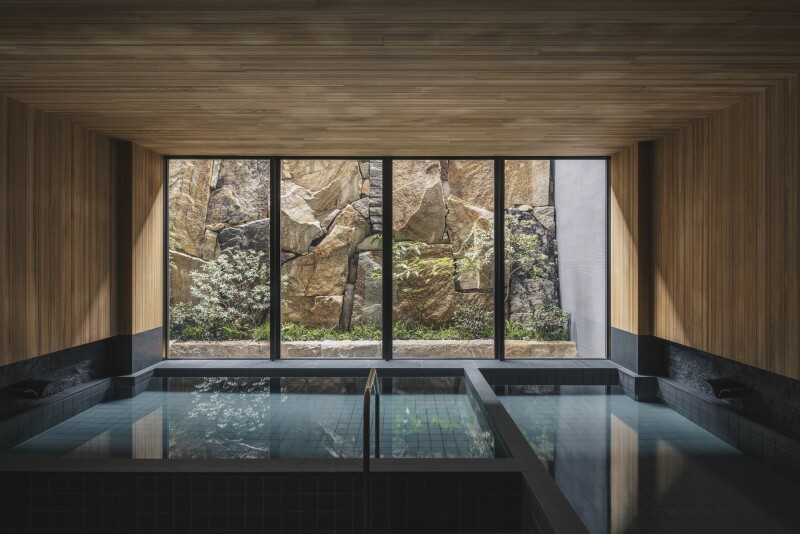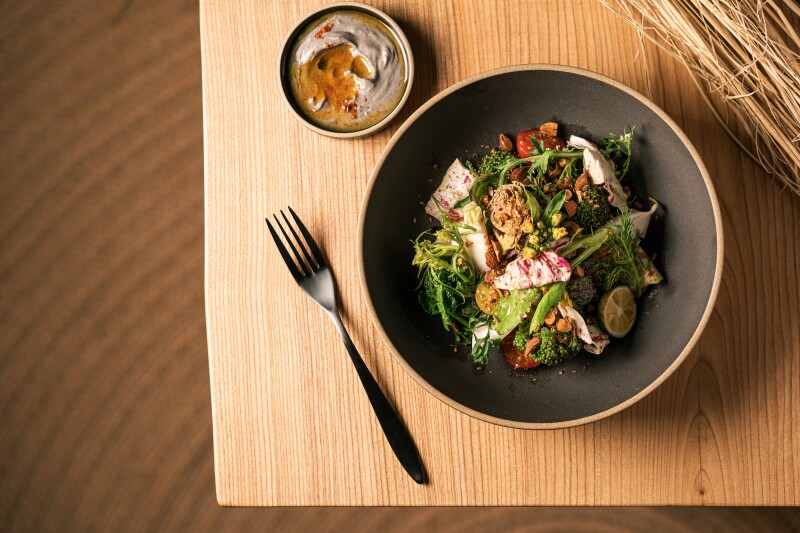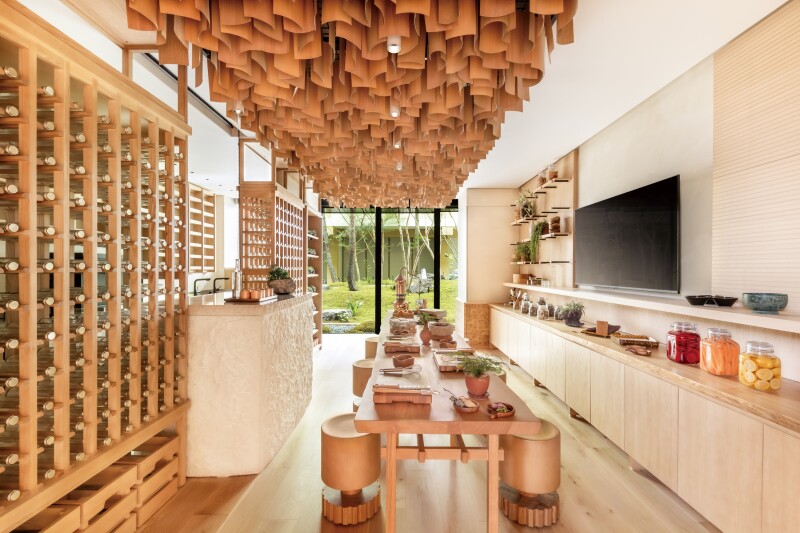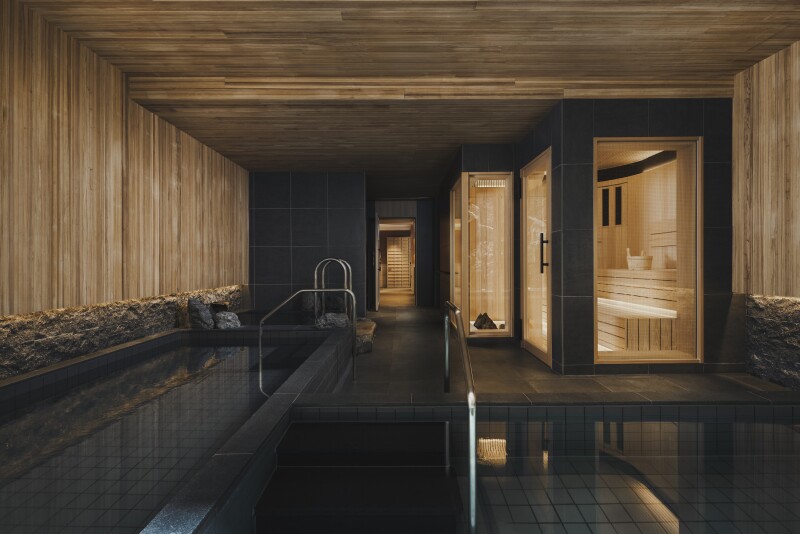~ The vibe: An urban haven of well-being that’s rich in cultural experiences Location: 431 Myohoin Maekawacho, Higashiyama Ward, Kyoto, Japan | View on Google Maps Loyalty program: IHG One Rewards ~ |
~
The Afar take
The Six Senses hotel collection has become a standard bearer for well-being seekers and eco-conscious travelers looking to immerse themselves in sublime natural landscapes and local culture. In late April 2024, Six Senses Kyoto opened its doors as the brand’s second urban location (the first being in Rome in 2023) and its first property in Japan. Kyoto, a city of 1.5 million people and known for its Buddhist temples, Shinto shrines, and ancient crafts traditions, is a perfect match for Six Senses, whose Kyoto property embraces its setting through thoughtful design and guest programming.
The hotel feels chic and contemporary while remaining richly textured, thanks to playful and modern design reinterpretations of the Heian period (794–1185), considered Japan’s cultural golden age when Kyoto was the capital. There are many references to The Tale of Genji, considered the world’s first novel and written by Murasaki Shikibu, a woman in the Japanese court, in 1010. (The original manuscript is housed next door in the Kyoto National Museum’s archive.)

The bathhouse area of the spa at Six Senses Kyoto
Courtesy of Six Senses Kyoto
In the open-air lobby, which faces a Japanese garden courtyard, a long ceramic screen of handmade raku-yaki tiles (a type of ceramic used for matcha ceremonies) illustrates one of the novel’s locations, Mount Kurama, where Reiki healing originated. The lobby’s white ash ceiling resembles creased origami paper, the inspiration being the folded scroll upon which the original novel was written.
The hotel experience unfolds in a quiet, wood-scented atmosphere that invites relaxation and cultural enlightenment, from the comprehensive wellness center and the all-day restaurant focusing on seasonal Japanese ingredients to hands-on arts and crafts experiences.
Who’s it for?
Stressed-out international travelers will find a Zen take on restorative spa indulgences and results-oriented biohacking. Urban explorers should appreciate a sumptuous, well-located retreat after days of sightseeing. Families with kids will adore Grow with Six Senses, a plastic-free space for young travelers focusing on cultural activities, while a separate Earth Lab next door will appeal to eco-conscious travelers with insights into the hotel’s sustainability initiatives.
Gourmands and sybarites who aren’t checking into the hotel will also flock here: To draw the surrounding community into the hotel, the food and beverage outlets and spa are open to outside guests.

This Premier Garden Suite at Six Senses Kyoto features a private stone garden.
Courtesy of Six Senses Kyoto
The location
Located in the Higashiyama neighborhood—a mile south of the legendary Gion geisha district—Six Senses Kyoto is 10 minutes by car from Kyoto Station, the famous Nishiki food market, and several notable temples and shrines, including the Torii gate-studded Fushimi Inara Taisha. It’s about 20 minutes on foot to the popular Kiyomizu-dera temple, with many worthwhile stops along the way, including kimono rental boutiques, restaurants, and ceramics shops. POJ Studio, around the corner from the hotel, offers intimate classes in kintsugi and shuro hand broom making.
The hotel feels chic and contemporary while remaining richly textured, thanks to playful and modern design reinterpretations of the Heian period.
The rooms
Designed in soothing neutral tones by Blink Design Group, the 81 guest rooms and suites—the grandest is a sprawling Three Bedroom Penthouse—either face outward toward the city or inward to green gardens. The architecture echoes some of the vernacular of classic Japanese ryokans, with such details as guest room hallway carpeting that mimics tatami mat flooring. The asa-no-ha (hemp leaf) pattern etched into wood behind the beds is a Japanese Buddhist sign of health and wellness, while soft organic shapes and feel-good textiles give interiors a cozy atmosphere. A plastic-free minibar is stocked with local craft beverages and snacks, plus tasty house-made bites, including soy sauce beet crackers and lemon cookies.
Sleep is a central focus of the accommodations, which are outfitted with custom Naturalmat organic mattresses, temperature-regulating pillows, blackout curtains, and pajamas designed for fatigue recovery by Japanese recovery-wear brand Tential. Rooms also have yoga mats and soft brown felt slippers (guests can take the slippers home with them). Do Not Disturb signage takes a novel turn, too: Each entryway has a handmade fox mask made of recycled washi paper whose eyes or whiskers are illuminated, but when guests want privacy, they go dark with the press of a button in the room. (The fox is a mischievous guardian deity and messenger in the Shinto religion.)

The bathroom of a Deluxe Garden Suite at Six Senses Kyoto
Courtesy of Six Senses Kyoto
I loved the natural light in our Deluxe Suite Garden accommodations, which faced westward to the hotel’s maze-like herb garden, Toyokuni Shrine garden, and the sun setting behind the mountains outside the city. These views were on display from our bedroom, living room, long balcony, and the bathroom’s ofuro-shaped bathtub. For an extra dose of nature and seclusion, book one of the two Premier Suite Garden rooms with their own mossy Japanese gardens.
The food and drink
Sekki is the indoor-outdoor three-meal restaurant, and next to it is the more casual Café Sekki, which is open from 7 a.m. to 6 p.m. They’re named after Japan’s 24 sekki, or solar terms within a year, which correlate with the agricultural calendar and micro seasons. The exquisite kimono thread-weaving art in the dining room comes from Nishijin in Kyoto; a local artist used it to create a mural inspired by A Midsummer Night’s Dream, with vegetables and animals dressed in costume at a party around a tree decorated with Shinto omikuji fortune telling paper slips.
The menu changes every two weeks, playing into the hyper-seasonal approach that is evident in the veggie-focused, root-to-stem dishes that make up more than half the offerings. Gargantuan carrots are treated with miso vinaigrette while okra and tamba mushrooms are coated in lighter-than-air tempura batter; flawlessly cooked Japanese wagyu cuts like butter. What I love about Six Senses is that well-being can include occasional indulgences like wine and dessert; I savored every bit of the perfect brownie batter–like chocolate fondant one night.

Dinner at Six Senses Kyoto is fine-tuned to seasonal ingredients.
Courtesy of Six Senses Kyoto
Breakfast is an experience unto itself. It encompasses a number of Uji heirloom egg selections and sweet treats featuring Kyoto honey alongside limitless juices, smoothies, and wellness shots, plus bountiful fresh fruit, pastries, and charcuterie. The dedication to low- approaching zero-waste is evident in fiber-rich sesame seed crackers served at lunch made from the leftover veggie pulp from the morning’s juice making.
The bar, Nine Tails, plays on Edo-era fox lore and is designed to be a place the cunning creatures (believed to have nine tails) might come for a secret party. Speakeasy-like, it’s stocked with mostly Japanese spirits and liquors—the outlier is Mexico-sourced aquavit by a Japanese maker. From the zero-waste cocktail menu, I ordered a Miso Ginger Sour, a delicious blend of umami bitters and a homemade syrup of Kyoto white miso, honey, and ginger.
Staff and service
Staff members, which the hotel calls GEMs (guest experience makers), are on call around the clock and were very helpful when we needed a recommendation for reaching nearby sights, booking restaurant reservations, and arranging transportation. The staff was particularly sweet with my toddler, who kept wanting to repeat the hotel’s welcome ritual—a tiny spoonful of incense powder in the palm to rub between your hands and inhale. They happily obliged.
Accessibility
The newly built hotel has few stairs, except for ladders to get into the pool and steps down into the watsu treatment pool. There’s one wheelchair-ready Accessible Superior King room and Braille signage throughout the hotel for visually impaired guests.
Sustainability
The LEED silver-certified hotel, which is plastic free, filters and bottles its own water—sparkling and still—and features Earth Lab, an on-site studio dedicated to repurposing and reusing materials into Japanese crafts. Used paper and old menus are recycled to make washi paper, and kitchen vegetable scraps and leftover spices become smell-good paints for decorating traditional sensu fans. Local artisans lend their talents, too, for activities that include practicing sashiko, the art of reinforcing upcycled vintage fabrics with embroidery. Guests can also create moss balls—the first step in bonsai making—and learn to make green tea, starting with picking their own matcha leaves on property.
Nearby, past an old-growth cherry blossom tree, the herb garden grows the matcha along with aromatics like holy basil, lemon thyme, lavender, cucumber, and fushimi chilies to use in the Alchemy Bar and Sekki, where as much produce as possible is used before scraps are added to the on-site compost (the hotel is aiming to be zero waste).

The Earth Lab at Six Senses Kyoto
Courtesy of Six Senses Kyoto
The hotel’s Sustainability Fund uses .5 percent of the hotel’s revenue to support two local forest conservation organizations, Biotope Network Kyoto and Council for Kyoto Traditional Forest Culture, whose projects help increase biodiversity to counteract landslides due to monoculture. Guests and locals can join back-of-house sustainability tours to witness the hotel’s sustainability practices, which include the delivery of produce in reusable crates from regenerative farms within a six-mile radius to reduce food miles and CO2 emissions.
The spa
The spa and wellness facilities include an onsen-inspired hot bath with a view of a serene garden, along with dry and wet saunas, and a 62-foot indoor lap pool lined with cabanas and a whimsical Genji-inspired mural depicting clouds. The spa’s small boutique sells locally sourced products—camellia oil traditionally used by maiko geisha and incense from a shop that supplies area temples. Here, the Six Senses Alchemy Bar lets guests make recipes that tie directly into Kyoto’s heritage, like a matcha face mask or seasonal bean scrubs.

The sauna area of the Six Senses Kyoto spa
Courtesy of Six Senses Kyoto
The four treatment rooms each have a different theme. For example, the Sound room has a gong and dozens of droplet-like golden chimes hanging from its ceiling. Many treatments are multi-sensory, such as Ah-Un, a Qi-promoting massage that uses tuning forks on acupuncture points, and watsu in a warm pool. There are even kids experiences, including foot mapping; the omakase option allows therapists to tailor an experience for guests. After a 15-minute Wellness Screening, I got a recommended upper body massage that brought my shoulders down by what seemed like inches.
A dedicated Sensory room is used for aerial and traditional yoga, sound healing, and meditation sessions, while a Biohack Recovery Lounge sits next to a bamboo water feature and has gadgets including compression therapy and LED face masks that can help with posttravel recovery or pain. From $1,083








